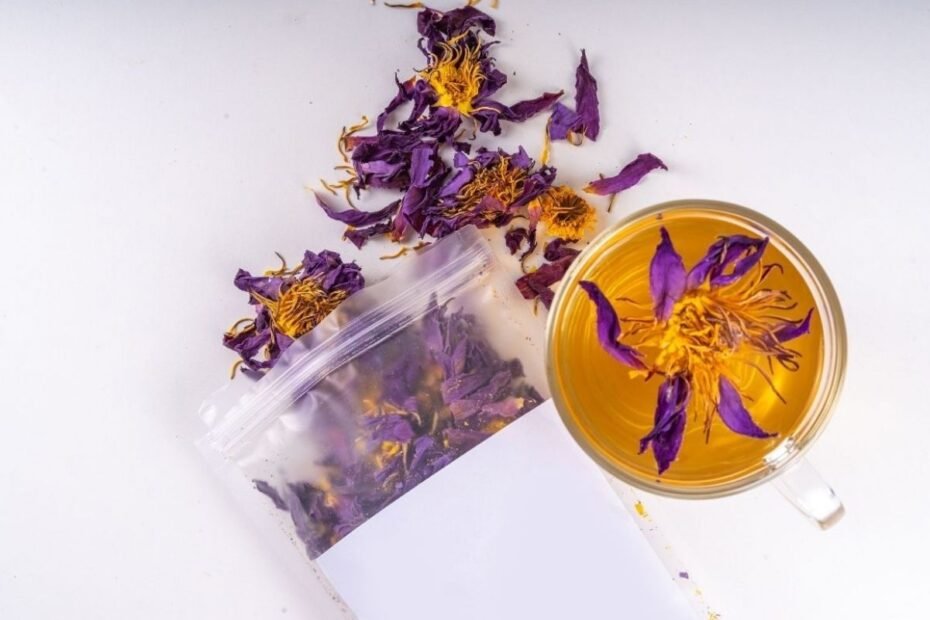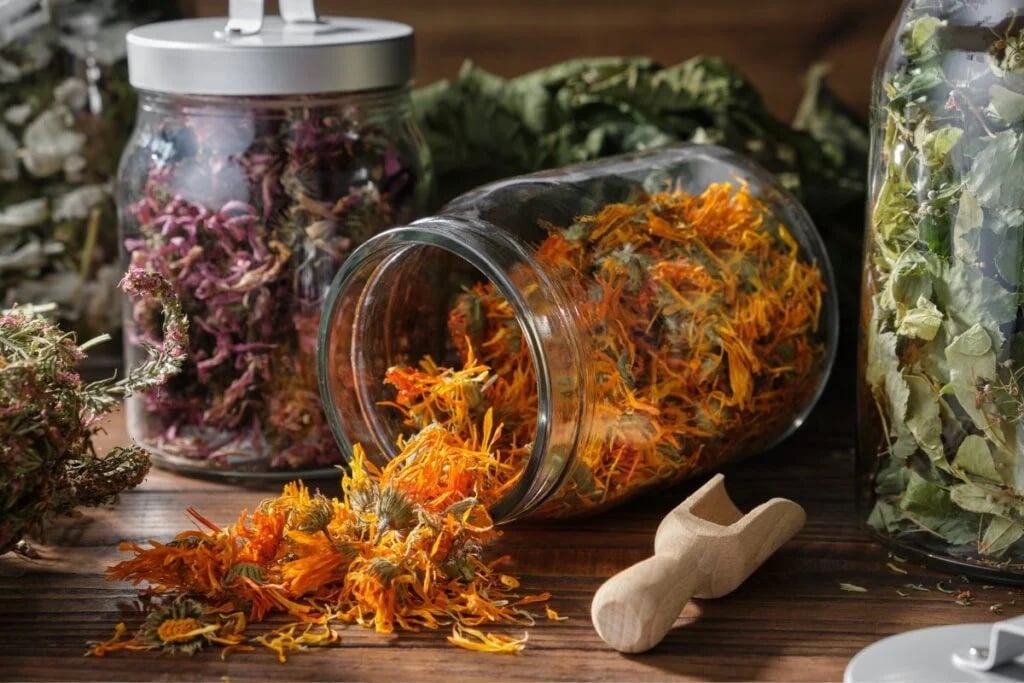The very name Blue Lotus evokes an aura of mystery, serenity, and exotic beauty. The drink, prepared from this remarkable flower, equally reflects these qualities. Blue Lotus tea is an unfamiliar beverage to most of us, notable for its deep, vivid color and its delicate taste. This profile combines mild floral sweetness with herbal undertones. Often described as mildly therapeutic or even slightly psychoactive, this tea has gentle euphoric and possibly hallucinogenic effects. Its traditional use in meditation sessions highlights its calming and relaxing nature. In this guide, you’ll discover the blue lotus tea benefits, its potential side effects, and how to prepare and enjoy it safely.
What Do We Call the Blue Lotus?
The blue lotus (Nymphaea caerulea, sometimes classified as N. nouchali var. caerulea) is a flower, which people also know as the Egyptian water lily. Closely resembling the familiar water lilies of northern regions, it features broad, rounded leaves floating on the water surface (8–35 cm in diameter), submerged rhizomes, and blossoms that open and close in response to daylight. The flowers range in color from blue and pale violet to white or pink, typically measuring 8–12 cm across.
A member of the water lily family (Nymphaeaceae), the blue lotus grows naturally in eastern Africa, Egypt, and southern Arabia. However, thanks to its ornamental beauty, it is now cultivated worldwide as a striking feature in ponds and garden water features.
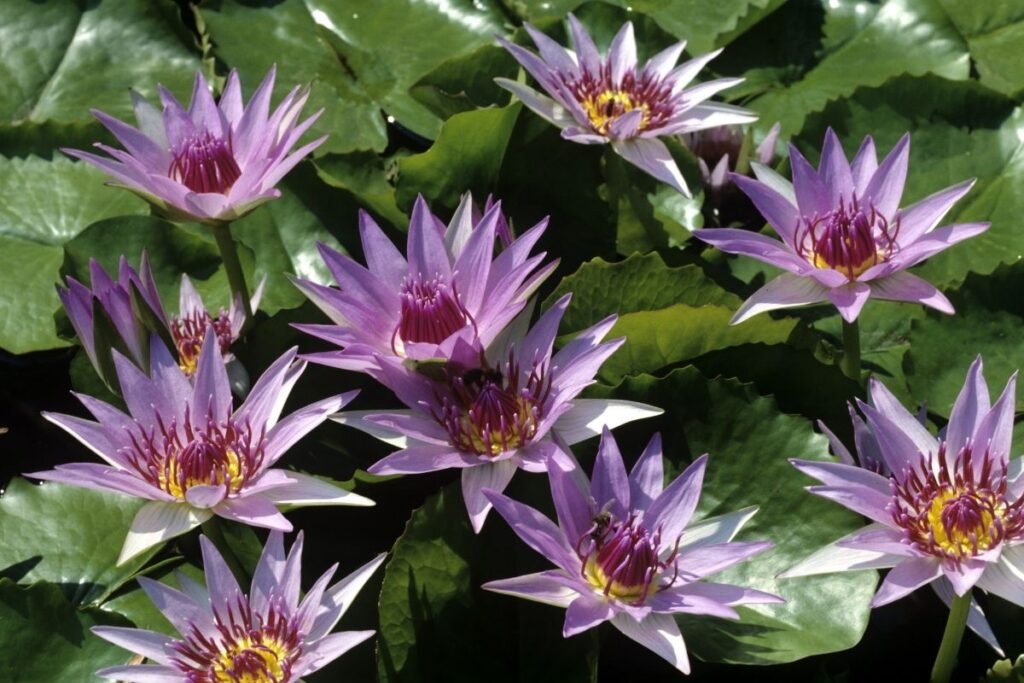
Characteristics of Blue Lotus Tea
To enjoy an authentic cup of blue lotus tea, one must first obtain the proper dried petals, which are available from various online stores. The petals are thin and delicate, usually soft blue or violet with hints of yellow veins. When steeped in hot water, they release a gentle blue or golden-blue hue, depending on the quantity of petals and water pH (slightly acidic water produces a more violet tone).
The aroma is floral and refined, reminiscent of lavender or jasmine with a touch of honey. Its flavor mirrors the scent—subtly sweet and floral, with herbal and honeyed notes. Some people detect a hint of bitterness or a mild, mineral-like aftertaste similar to chamomile.
What truly sets Blue Lotus tea apart is its chemical composition. It contains two primary alkaloids—nuciferine and aporphine (and occasionally apomorphine)—which are often discussed for their potentially psychoactive effects. In addition, the tea provides flavonoids (kaempferol, quercetin, and myricetin), polyphenols (gallic, caffeic, and ferulic acids), essential oils, and trace minerals.
Potential Benefits of Blue Lotus Tea
While the purported health benefits of blue lotus tea are often discussed, scientific evidence remains limited. Much of what is known today is based on ancient Egyptian traditions and a handful of laboratory and animal studies. Still, this plant appears to offer several distinctive effects that may support well-being.
The main active compounds—its alkaloids—are thought to promote relaxation, mild euphoria, and mood balance, while its antioxidant content may contribute to cellular protection. However, experts advise caution: Blue Lotus tea can induce deep relaxation and, in some individuals, a euphoric state.
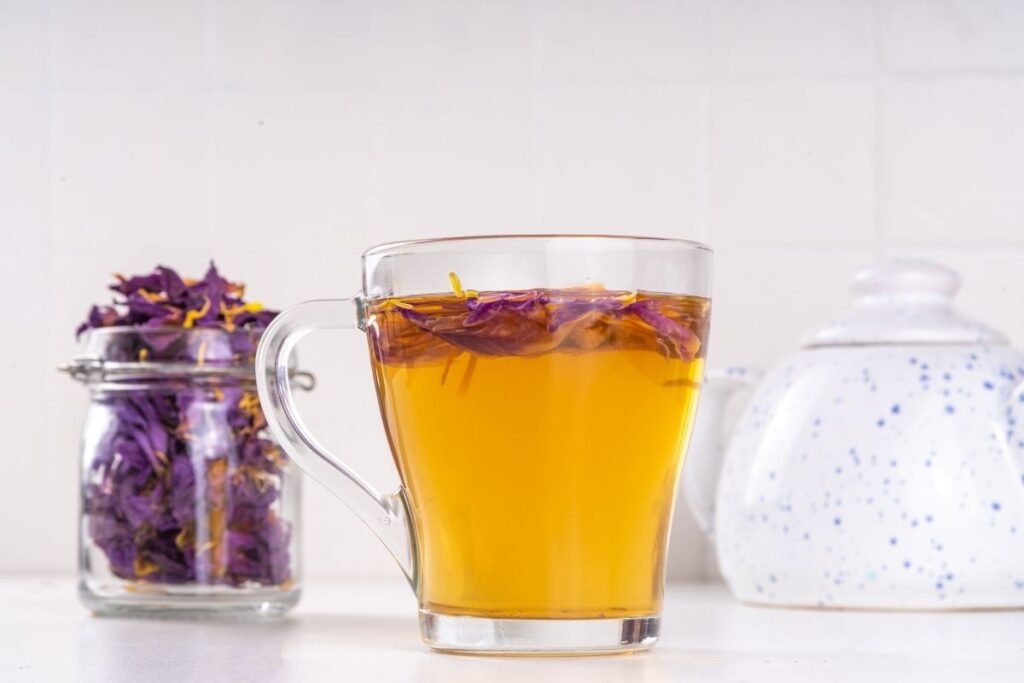
Blue Lotus Tea Benefits
- Neuromodulation. Laboratory studies have shown that the alkaloid nuciferine actively interacts with several receptor systems, including D₂, 5-HT₂A, and 5-HT₁A, influencing both dopamine and serotonin pathways. This compound exhibits a polypharmacological profile, meaning it can affect multiple receptors simultaneously. In animal models, scientists linked such interactions to noticeable behavioral changes and altered neural activity.
- Calming and Sedative Potential. Preliminary data suggest that extracts from the blue lotus may possess relaxing and pain-relieving (analgesic) properties, though most of these findings are limited to in vitro or animal research. Despite the lack of human trials, many tea drinkers report that blue lotus tea helps them unwind, fall asleep more easily, and reduce stress or mental tension after a long day.
- Possible Antipsychotic Properties. In several in vivo studies, nuciferine has demonstrated effects that some researchers interpret as antipsychotic. It potentially eases symptoms related to psychosis or depression. However, this does not translate into any approved medical use. You should never use Blue Lotus tea as a substitute for prescribed treatment of severe conditions such as depression, psychosis, or Parkinson’s disease.
- Antioxidants and Phytochemicals. Chemical analyses reveal that blue lotus contains a variety of flavonoids and other bioactive plant compounds. That, in theory, may act as antioxidants. However, human-specific studies are still lacking, and any claims of direct health benefits remain speculative at this point.
- Traditional and Anecdotal Uses. In ancient Egyptian medicine, blue lotus was often valued as an aphrodisiac, a mood enhancer, and a digestive aid. While these associations persist today, they are based on traditional beliefs rather than confirmed scientific evidence.
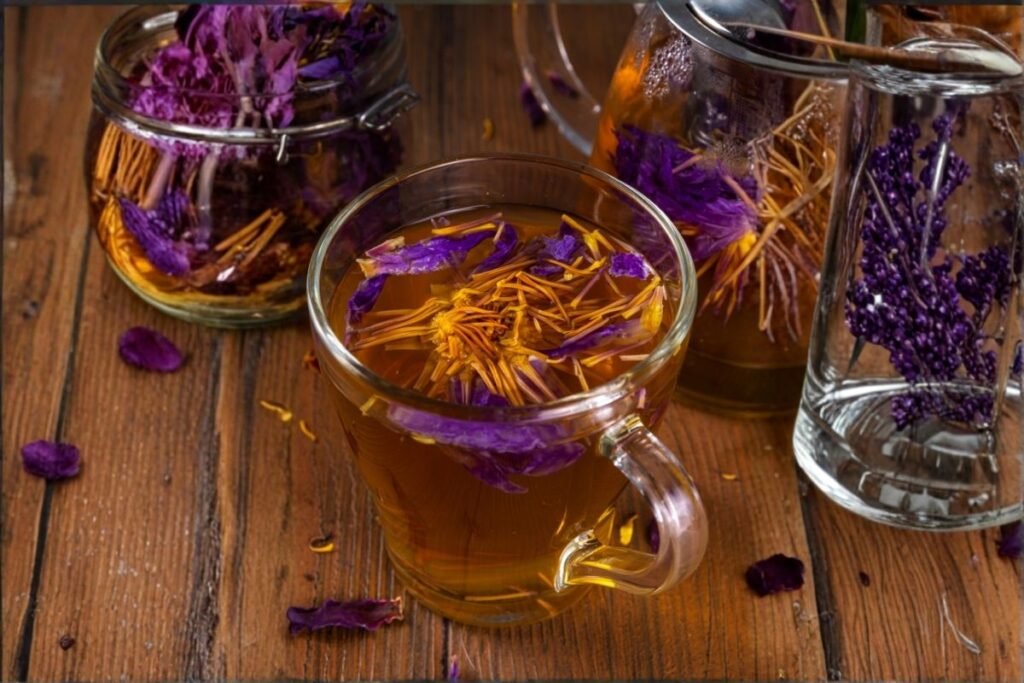
Preparation and Safe Use of Blue Lotus Tea
If you can make an ordinary herbal tea, you can easily prepare blue lotus tea as well. Simply steep 1–2 grams of dried petals in a cup of freshly boiled water (around 80–90°C) for 10–15 minutes, covering the cup to preserve the aroma. Strain before drinking if desired.
The optimum time to enjoy this tea is one to two hours before bedtime, because of its soothing effect. It can also be consumed before meditation or relaxation sessions. Avoid drinking it if you plan to drive or perform mentally demanding tasks. For general relaxation, it can be enjoyed every other evening. For meditative purposes, two to three times per week is sufficient.
Legal Status of Blue Lotus Products
Given that blue lotus flowers contain alkaloids with mild psychoactive properties, questions about their legality naturally arise. In some countries (you should check the situation in your own), governments do not regulate or restrict the plant and its dried petals by law. It means you can therefore purchase it through various online retailers. It is officially classified only as a botanical or ornamental species, with no formal recognition as a consumable product.
However, it is essential to note that some European countries, such as Latvia and Poland, explicitly prohibit the sale or use of blue lotus extracts, teas, or related products due to their psychoactive potential.
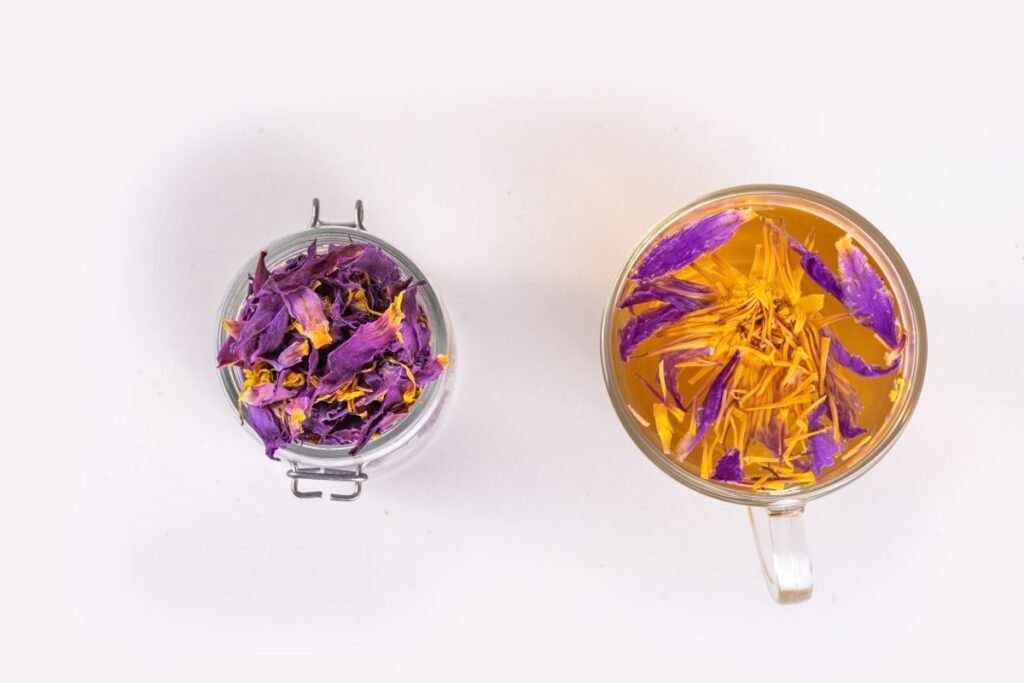
Possible Side Effects
While people mark Blue Lotus tea as a gentle, natural relaxant, its active alkaloids can occasionally produce unwanted or interacting effects. Reported side effects include:
- Drowsiness and lethargy result from its sedative impact on the central nervous system.
- Dizziness or a mild intoxicated feeling, especially when consumed in large doses or in concentrated extracts—these sensations typically wear off within a few hours.
- Nausea or stomach discomfort, which may occur in sensitive individuals due to the bitter alkaloids.
- Dry mouth is a symptom due to mild anticholinergic activity.
- Slight decrease in blood pressure, caused by the vasodilating effect of aporphine.
- In rare cases—particularly when you vaporize or take it in high concentrations—you may experience hallucinations or altered time perception.
- Because the blue lotus influences the central nervous system, it may interact with various medications, including sedatives, antidepressants, antipsychotics, or dopamine agonists.
- For safety reasons, experts suggest not to use Blue Lotus tea for pregnant or breastfeeding individuals, children, or anyone with neurological or psychiatric sensitivities because of the absence of robust clinical research.
Sources:
- https://www.mdpi.com/1420-3049/28/20/7014
- https://tripsitter.com/blue-lotus/
- https://pubmed.ncbi.nlm.nih.gov/37894493
- https://pubmed.ncbi.nlm.nih.gov/18534639
- https://www.healthline.com/nutrition/blue-lotus-flower
Associative photos ©Canva.
